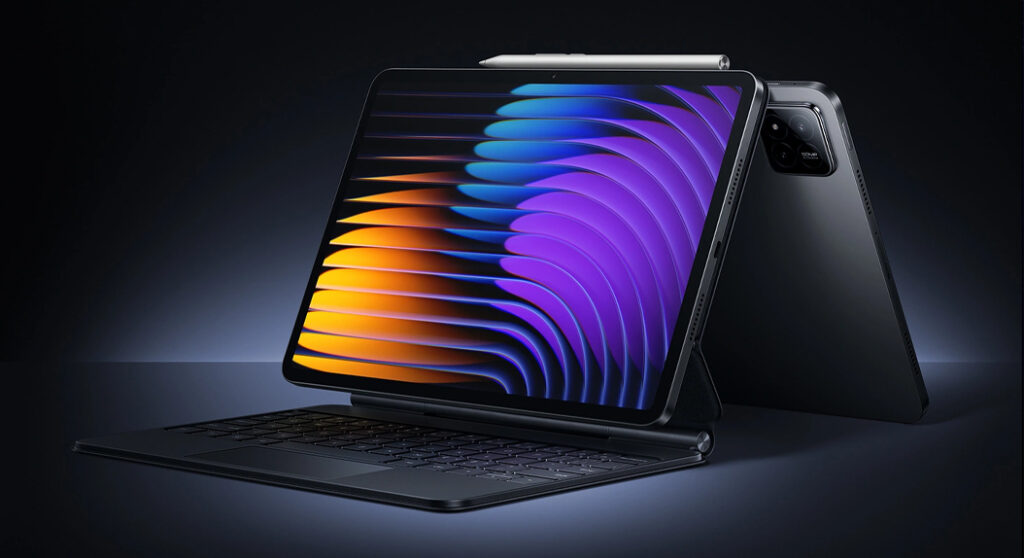Xiaomi Pad 8 Pro Rumored to Launch with Snapdragon 8 Elite and IPS Display
Xiaomi seems to be gearing up for another flagship tablet release later this year. After the recent unveiling of the Xiaomi Pad 7S Pro and Redmi K Pad, reliable leaks now point to a new high-end tablet in the pipeline—likely the Xiaomi Pad 8 Pro. While expectations are high, early reports suggest the tablet will stick with an IPS display, which may disappoint users hoping for OLED innovation.

Xiaomi Pad 8 Pro Launch Timeline and Source of Leak
According to prominent Chinese tipster Digital Chat Station, the Xiaomi Pad 8 Pro is expected to debut alongside the Xiaomi 16 series smartphones, likely in late September or early October 2025. While Xiaomi hasn’t officially confirmed the tablet yet, the leak offers a solid glimpse into what the tech giant may have planned.
Display: IPS Panel Again—No OLED Yet
No OLED for Flagship Tablet?
Despite being positioned as a premium Android tablet, the Xiaomi Pad 8 Pro is rumored to continue using an IPS LCD panel, rather than upgrading to OLED. This will likely come as a disappointment to users who expected a richer visual experience, especially considering competitors in the same segment have already adopted OLED.
The display is expected to measure between 11 and 12 inches, similar to its predecessor. While IPS panels can deliver vibrant colors and wide viewing angles, they fall short in contrast and true black levels compared to OLED technology.
Power and Performance: Snapdragon 8 Elite
A Flagship-Level Processor
One of the most exciting upgrades comes in the form of the Snapdragon 8 Elite chipset, Qualcomm’s latest and most powerful processor. This upgrade positions the Pad 8 Pro as a strong performer for heavy-duty tasks like gaming, multitasking, and video editing.
Although RAM and storage configurations haven’t been leaked yet, we can expect at least 12GB of RAM and UFS 4.0 storage, in line with other flagship-level Android tablets.
Battery Life: Large Capacity Expected
While specific figures are not yet confirmed, the tipster mentions that the Xiaomi Pad 8 Pro will house a “large battery”. If Xiaomi follows the pattern of the Pad 7S Pro, we could see a battery in the 8500–9000mAh range, possibly with fast wired charging capabilities in the 67W or higher bracket.
Gaming Enhancements: What Could Be New?
One of the more intriguing details from the leak is a mention of “exclusive features for gaming performance.” Although specifics are still under wraps, this could indicate:
-
Advanced cooling system or vapor chamber
-
Optimized gaming mode in software (HyperOS enhancements)
-
Dedicated gaming accessories or stylus improvements
-
Enhanced GPU optimization and touch latency
With Snapdragon 8 Elite at the core, these enhancements could make the Pad 8 Pro a solid contender for serious mobile gamers.
Comparing Xiaomi Pad 7S Pro vs. Xiaomi Pad 8 Pro (Expected)
Here’s a quick side-by-side based on what’s known and rumored so far:
| Feature | Xiaomi Pad 7S Pro | Xiaomi Pad 8 Pro (Expected) |
|---|---|---|
| Display | 11.2″ IPS LCD, 144Hz | 11–12″ IPS LCD, ~144Hz |
| Processor | Snapdragon 8s Gen 3 | Snapdragon 8 Elite |
| RAM & Storage | Up to 12GB + 512GB UFS 4.0 | Possibly 12GB+, UFS 4.0+ |
| Battery | 8850mAh, 67W fast charging | Large battery, ~67W charging |
| Camera (Rear) | 50MP + 2MP depth sensor | TBD |
| Camera (Front) | 32MP ultrawide | TBD |
| OS | Android 15 + HyperOS 2 | Likely Android 15 + HyperOS |
| Stylus Support | Yes | Yes |
| Gaming Features | Standard Gaming Mode | Exclusive Gaming Features |
The tablet is expected to run Android 15 with HyperOS 2, Xiaomi’s unified system designed for better cross-device connectivity. Users can anticipate improved multitasking features, stylus input support, and seamless integration with Xiaomi’s ecosystem of smartphones, wearables, and smart home products.
Solid Upgrade with Some Reservations
The Xiaomi Pad 8 Pro seems poised to offer significant upgrades in performance and gaming capabilities, thanks to the Snapdragon 8 Elite chip and possible software enhancements. However, the continued use of an IPS display instead of OLED might limit its appeal for media enthusiasts.
Still, if priced right, this tablet could become a top pick for power users, gamers, and professionals seeking flagship-level performance in a premium Android tablet—just without OLED.




